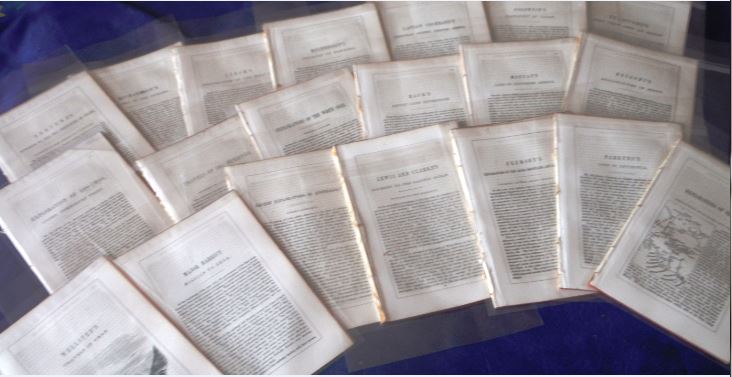The Breaker : Still controversial – but it can be profitable
- by Susan Halas

The text selections are of lesser value but some have nice illustrations. There were dozens in this.
Make a copy of the title page and put one in each bag. If you prefer to be a little vague about precisely where this material originates at least make a copy of the portion of the title page showing the publisher, city and publication date.
The real art to making money from a breaker is doing the research and writing the descriptions.
In the case of this particular volume that means noting that some of the maps have a publisher’s imprint of Schonberg & Co. Acrography, NY. It’s good to know that sources citing “acrography” as method of printing images begin to appear in the early 1840s, so 1856 is pretty early on. Also notice that some of the maps show the route or track of one or more of the expeditions, and still others have attractive additional vignette illustrations.
Be sure your description identifies the material as “disbound” (extracted from) a larger volume.
Even though none of the material in this book is the original edition and despite the fact that the text is abbreviated it gives the reader a very good sense of what a mid-19th century American would have known about a particular explorer or expedition - and that - in and of itself, is a selling point.
The principal charms of this kind of offering is it’s antique, it’s in good condition, it’s affordable, it’s easy to pack and ship and though almost nobody wants all of it, in parts it can have a much wider appeal.
----------------
Reach writer Susan Halas at wailukusue@gmail.com